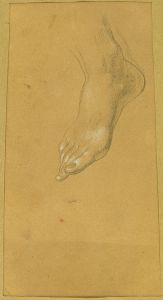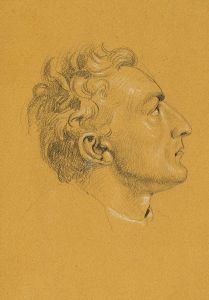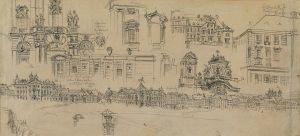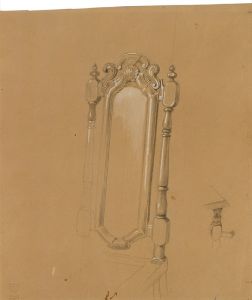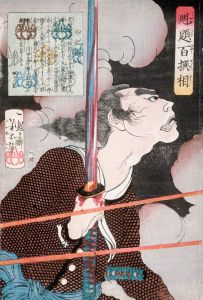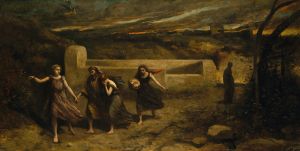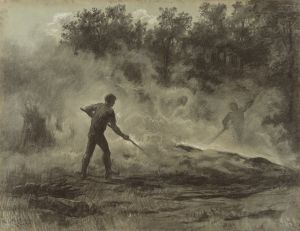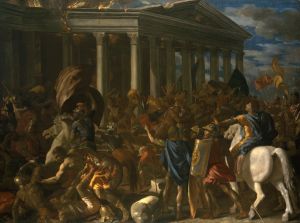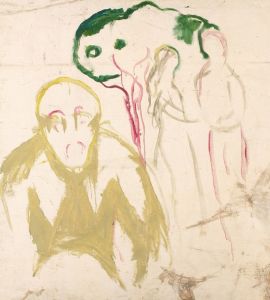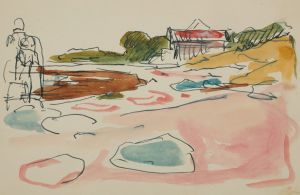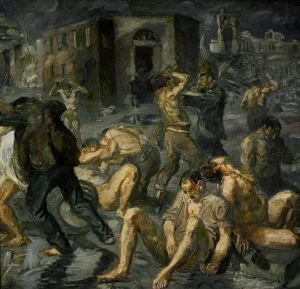
Landschaftsstudie mit brennenden Dörfern im Hintergrund
A hand-painted replica of Johann Peter Krafft’s masterpiece Landschaftsstudie mit brennenden Dörfern im Hintergrund, meticulously crafted by professional artists to capture the true essence of the original. Each piece is created with museum-quality canvas and rare mineral pigments, carefully painted by experienced artists with delicate brushstrokes and rich, layered colors to perfectly recreate the texture of the original artwork. Unlike machine-printed reproductions, this hand-painted version brings the painting to life, infused with the artist’s emotions and skill in every stroke. Whether for personal collection or home decoration, it instantly elevates the artistic atmosphere of any space.
Johann Peter Krafft's "Landschaftsstudie mit brennenden Dörfern im Hintergrund" is a notable work by the Austrian painter, who was active during the late 18th and early 19th centuries. Krafft, born in 1780 in Hanau, Germany, was a prominent figure in the Biedermeier period, known for his historical and genre paintings. He studied at the Academy of Fine Arts in Vienna and was influenced by the works of Jacques-Louis David and other neoclassical artists.
The painting, whose title translates to "Landscape Study with Burning Villages in the Background," reflects Krafft's skill in capturing dramatic and emotive scenes. While specific details about this particular work are scarce, it is consistent with Krafft's interest in historical themes and his ability to convey the emotional weight of conflict and turmoil through his art.
Krafft's oeuvre often depicted scenes of war and its aftermath, a reflection of the turbulent times in which he lived. Europe during Krafft's lifetime was marked by significant upheaval, including the Napoleonic Wars, which had a profound impact on the continent's political and social landscape. Artists of the period frequently grappled with these themes, using their work to comment on the human condition and the consequences of war.
In "Landschaftsstudie mit brennenden Dörfern im Hintergrund," Krafft likely employs a landscape setting to juxtapose the natural beauty of the environment with the destructive forces of human conflict. This contrast would have served to heighten the emotional impact of the scene, a technique commonly used by artists to evoke a sense of loss and tragedy.
Krafft's attention to detail and his ability to infuse his landscapes with narrative depth are evident in this work. His use of light and shadow, as well as his careful composition, would have drawn viewers into the scene, encouraging them to reflect on the broader implications of the depicted events. The burning villages in the background serve as a poignant reminder of the devastation wrought by war, a theme that resonates with audiences even today.
Throughout his career, Johann Peter Krafft held several prestigious positions, including serving as the director of the Belvedere Gallery in Vienna. His contributions to the art world were recognized during his lifetime, and his works continue to be studied and appreciated for their historical significance and artistic merit.
While "Landschaftsstudie mit brennenden Dörfern im Hintergrund" may not be as widely known as some of Krafft's other works, it remains an important example of his ability to blend landscape painting with historical narrative. The painting serves as a testament to Krafft's skill in capturing the complexities of human experience and the enduring impact of historical events on the cultural consciousness.
In summary, Johann Peter Krafft's "Landschaftsstudie mit brennenden Dörfern im Hintergrund" exemplifies the artist's mastery of landscape painting and his engagement with historical themes. Through this work, Krafft invites viewers to contemplate the intersection of nature and human conflict, a subject that continues to resonate across time and place.







